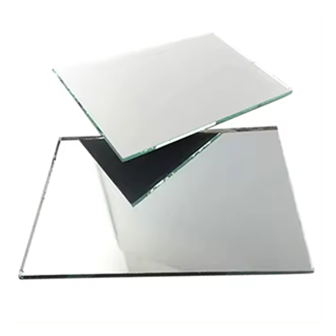Dec . 03, 2024 23:33 Back to list
Understanding the Benefits and Applications of Laminated Glass in Modern Architecture
The Versatility and Applications of Laminated Glass
Laminated glass is an innovative and versatile building material that has revolutionized the architecture and construction industries. It consists of two or more glass panes bonded together with an interlayer, typically made of polyvinyl butyral (PVB) or ethylene vinyl acetate (EVA). This unique construction method not only enhances the safety and durability of glass but also provides a range of aesthetic and functional benefits that have made it increasingly popular in various applications.
One of the primary advantages of laminated glass is its safety features. In the event of breakage, the interlayer holds the shards of glass together, preventing them from shattering and falling apart. This characteristic makes laminated glass an ideal choice for locations where safety is a priority, such as in schools, public buildings, and homes with children or pets. The design is effective in reducing the risk of injury from flying glass shards, thus providing peace of mind to both architects and end-users.
Additionally, laminated glass offers enhanced security. Its robust construction acts as a deterrent against break-ins, as the interlayer makes it significantly harder for intruders to gain access by simply smashing the glass. This feature has made laminated glass a preferred option for storefronts, banks, and other high-security environments. When combined with window films or other security measures, laminated glass can provide a formidable barrier against forced entry.
Another notable benefit of laminated glass is its ability to minimize noise pollution. Its layered structure significantly reduces sound transmission, thereby creating a quieter indoor environment. This property makes laminated glass particularly appealing in urban settings, where external noise can be a considerable issue. Businesses, hotels, and residential buildings in busy areas often opt for laminated glass windows and façades to enhance acoustical comfort for occupants.
laminated glass

In addition to safety and noise reduction, laminated glass also offers remarkable UV protection. The PVB interlayer blocks up to 99% of harmful ultraviolet (UV) rays from penetrating through the glass. This feature not only protects the interior of buildings from fading and damage caused by UV exposure but also contributes to energy efficiency. By minimizing heat gain and reducing the need for artificial lighting, laminated glass can help lower energy consumption, making it a sustainable choice for modern architecture.
From an aesthetic perspective, laminated glass is available in a variety of colors, tints, and finishes, allowing designers and architects to achieve their desired look. The interlayer can be customized with patterns or even printed graphics, offering endless design possibilities. This versatility makes laminated glass suitable for a range of applications, including facades, skylights, glass bridges, and interior partitions. Whether used in a residential or commercial setting, laminated glass can enhance the visual appeal of any space.
Laminated glass is also eco-friendly, as its production process often results in lower energy consumption compared to traditional glass manufacturing. Furthermore, the longevity of laminated glass reduces the need for frequent replacement, contributing to sustainability in construction practices.
Installation and maintenance of laminated glass are relatively straightforward. Modern advancements in processing and fitting techniques have made it easier for builders and contractors to incorporate laminated glass into their projects efficiently. Once installed, laminated glass requires minimal maintenance, making it an economical choice over its lifespan.
In conclusion, laminated glass is a multi-functional material that offers a wide array of benefits including safety, security, sound insulation, UV protection, and aesthetic versatility. Its increasing popularity in various industries is a testament to its effectiveness and adaptability. As architects and builders continue to seek innovative solutions, laminated glass will undoubtedly play a crucial role in shaping the future of construction and design, making spaces safer, more energy-efficient, and visually appealing. With the ongoing development of materials and technologies, the potential applications for laminated glass are expanding, reinforcing its position as a cornerstone in modern architecture. Whether utilized in residential, commercial, or public projects, laminated glass is poised to remain an integral part of our built environment for years to come.
-
Safety and Style with Premium Laminated Glass Solutions
NewsJun.24,2025
-
Reinvents Security with Premium Wired Glass
NewsJun.24,2025
-
Premium Float Glass Line for Modern Architecture
NewsJun.24,2025
-
Low Emissivity Glass for Energy-Efficient Architecture
NewsJun.24,2025
-
High-Performance Insulated Glass Solutions for Modern Architecture
NewsJun.24,2025
-
Elevates Interior Style with Premium Silver Mirror
NewsJun.24,2025
Related PRODUCTS














